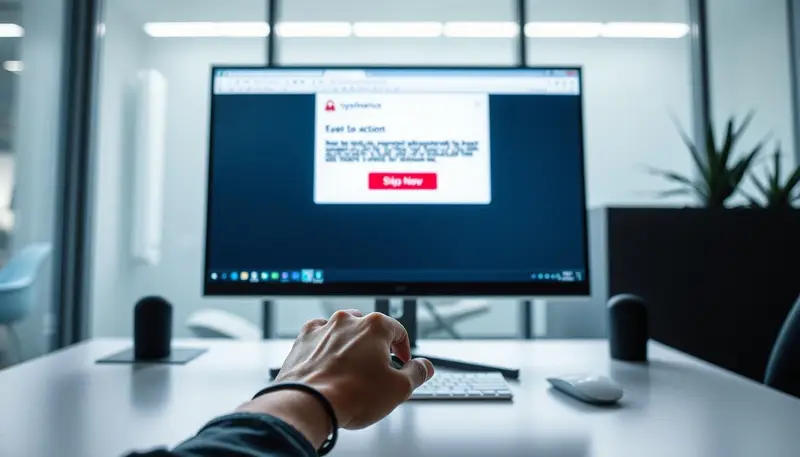Over 43% of cyberattacks target websites with unchanged admin credentials. Hackers exploit weak authentication, gaining unauthorized entry to sensitive data. Many site owners overlook this risk, assuming their content management system is secure by default.
Popular platforms like WordPress and Joomla come with preset login details. These defaults are publicly known, making sites vulnerable to brute-force attacks. A single breach can compromise user data, SEO rankings, and even payment systems.
We’ve seen major brands lose millions due to overlooked security settings. Properly managing access reduces risks significantly. Let’s explore why this matters and how to strengthen protection.
Key Takeaways
- Default credentials are a top target for hackers.
- Unchanged settings expose sites to brute-force attacks.
- Breaches can damage reputation and revenue.
- Strengthening authentication is critical for safety.
- Both WordPress and Joomla require proactive security steps.
Why Disabling Default Admin Access is Critical
Cybercriminals prioritize websites with unchanged login details. Small businesses suffer most—43% of breaches target sites using preset usernames and passwords. These vulnerabilities expose sensitive data, from customer records to payment systems.
The Risks of Default Admin Credentials
Attackers exploit predictable credentials like “admin” or “password123.” A WordPress security report found 60% of hacked sites used these defaults. Once inside, hackers deploy malware, steal data, or deface pages.
Credential stuffing is another threat. Hackers use leaked usernames from past breaches to guess passwords. Unlimited login attempts let bots crack weak combinations quickly.
Common Attack Vectors Targeting CMS Platforms
Three methods dominate:
- Brute-force attacks: Automated tools test thousands of password variations.
- SQL injections: Malicious code enters through unprotected admin directories.
- Plugin exploits: Outdated tools grant backdoor access.
| Attack Method | Prevention Tip |
|---|---|
| Brute-force logins | Limit failed attempts |
| Phishing scams | Train staff to spot fake emails |
| Plugin vulnerabilities | Update software monthly |
OWASP recommends hardening access controls. Firewalls block 80% of unauthorized authentication attempts. Custom login URLs further reduce exposure.
How to Disable Default Admin Access on WordPress
Securing your site starts with eliminating predictable entry points. Hackers target preset credentials first, so immediate action reduces risks. Follow these steps to lock down your dashboard.
Change the Default Admin Username
Never keep “admin” as a username. Create a new user with editor or administrator privileges. Delete the old account and assign content to the new profile.

Warning: Avoid obvious replacements like “admin2.” Use a unique alias unrelated to your site’s purpose.
Password-Protect the wp-admin Folder
Add an extra authentication layer via cPanel’s Directory Privacy tool. This requires a separate username and password before reaching the login page.
“HTTP authentication blocks 90% of automated bots.”
Customize Your Login URL
Plugins like WPS Hide Login change /wp-admin to a unique path. This thwarts bots scanning for default entry points.
- Monitor security logs for unauthorized access attempts.
- Update the URL periodically to stay ahead of scanners.
Limit Failed Login Attempts
Install Sucuri Security to cap retries at three. After that, the system blocks the IP temporarily. This stops brute-force attacks instantly.
For advanced users, add this to .htaccess:
RewriteEngine On
RewriteRule ^login$ /wp-login.php [L]Test changes thoroughly to avoid locking yourself out.
How to Disable Default Admin Access on Joomla
Joomla users face similar risks when preset credentials remain active. Attackers scan for /administrator directories using default login combinations. We’ll outline three critical steps to fortify entry points.
Modify User Group Permissions
Joomla’s hierarchy determines what each user can modify. Public groups should never have backend access. This matrix shows recommended settings:
| User Group | Admin Panel Access | Content Editing |
|---|---|---|
| Super Users | Full | All |
| Registered | None | Own articles only |
| Public | Blocked | None |
Navigate to Users → Groups to adjust these. Always audit inherited permissions from parent groups.
Disable WebAuthn Authentication Plugins
While WebAuthn strengthens authentication, outdated versions create vulnerabilities. Deactivate them via:
- Go to System → Plugins
- Search “WebAuthn”
- Toggle status to inactive
Note: Test third-party extensions afterward. Some may require alternative login methods.
Secure Menu Item Access Levels
Every menu link has visibility controls. Restrict administrative items to Super Users only:
- Edit any menu in Menus → Your_Menu_Name
- Click an item’s Access dropdown
- Select “Special” for Super User exclusivity
We recommend creating a backup user with full privileges before making these changes. This prevents accidental lockouts.
Conclusion
Security risks drop sharply within 72 hours of implementing these changes. Whether securing a site on WordPress or Joomla, proactive steps reduce vulnerabilities. Regular audits keep authentication layers effective.
Don’t rely solely on initial fixes. Update plugins, enforce two-factor logins, and monitor user activity. Host-level protections add another defense tier against breaches.
Download our security checklist to streamline the process. Future articles will cover firewall setups and backup strategies. Need tailored advice? Schedule a consultation today.







